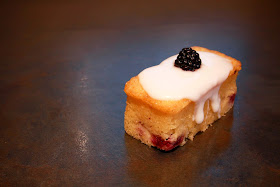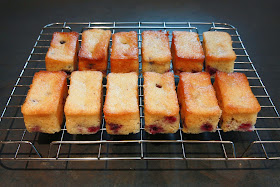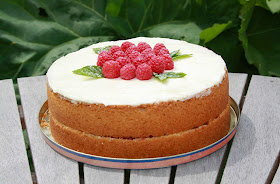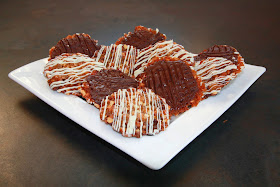I love blackberry-picking! We used to spend hours picking
them as a family on the cliffs of Guernsey and then eating home-made blackberry
and apple jam throughout the winter months.
This year’s blackberries seem to be particularly early –
I picture blackberry picking as a September, even October activity, but the
bushes were heavy with ripe and juicy berries when we went out last Sunday. In
a short time, we filled our tub and managed to come home with 2.4kg of
blackberries! Now what to do with them?!!
I froze a good pile of them (lay them out in a single
layer on a baking tray and freeze them flat before then pouring the
individually frozen berries into freezer bags) for future use. A scour of the
internet then came up with this delicious sounding blackberry and yoghurt loaf
cake on the Pudding Lane blog. I’m rather distrustful of loaf cakes – I haven’t
had much luck with them in the past (they tend to end up burnt on the outside
and sunken in the middle!) – and so I decided to make use of my favourite Lakeland mini loaf cake tin instead.
These cakes are quick and easy to make. The only slight
change I made was dusting the blackberries with cornflour – this tends to
prevent them from sinking. The recipe is
designed for a 1 kg loaf tin and so made slightly too much for my mini loaf
tin: I popped the extra into 6 fairy cake cases and baked these at the same
time as the loaf cakes.
I was really impressed with this recipe – it is very
moist and the lemon and blackberry flavours come through strongly and work
really well together! Will definitely be making these again!
Blackberry and yoghurt mini loaf cakes
- 2 eggs
- 225g yoghurt
- 225g caster sugar
- 150g ground almonds
- 100g self-raising flour
- 1 tsp baking powder
- 20g cornflour
- 1 lemon
- 150g blackberries
- 150g icing sugar
Method
- Preheat oven to 170C.
- Spray a mini loaf cake with cake-release spray.
- Place sugar and eggs into a mixing bowl, then whisk for 4-5 minutes (less in a stand mixer) until the mixture is pale, airy and forms ribbons when you drag the whisk across the surface.
- Add the yoghurt, the zest of the lemon and a pinch of salt, and fold together to mix.
- Sieve in the almonds, flour and baking powder, and fold until the mixture is combined.
- Sprinkle the blackberries with cornflour and then add two thirds of them to the cake mix.
- Pour the cake mix into your prepared tin and sprinkle over the remaining blackberries (reserving 12 for decoration), pushing slightly into the top of the cakes.
- Place the cakes in the centre of the oven. Bake for 20-25 minutes, until the cakes are golden and springy.
- Cool the cakes in the tin for about 15 minutes and then remove from the tin and place on a wire rack.
- While it's cooling, mix the icing sugar with enough juice from the lemon to make a thick pouring consistency.
- Pour over the cake once cool and top with a blackberry.
To make one large loaf cake: place the mixture in a 1 kg loaf
tin and bake for 45 minutes – 1 hour.






